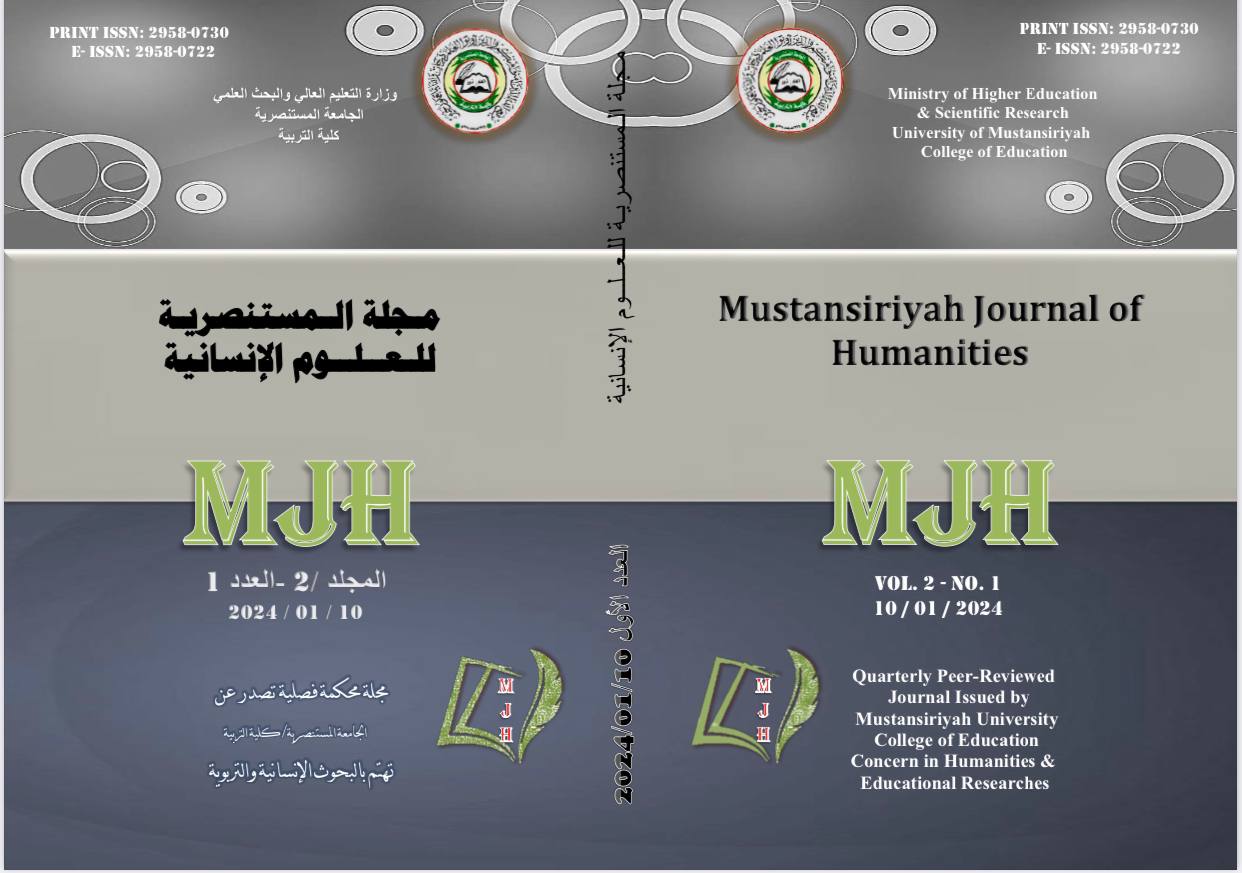Satirical Artistic Photography in the Poetry of Ibn Alruqaemaq Al'antakii (passed away 399Hjria )
DOI:
https://doi.org/10.47831/mjh.v2i1.311Keywords:
irony, satire, imagingAbstract
In this research, the researcher attempts to study the poetic phenomenon that appeared internally, and whose meanings became clear to the Abbasid poet, even if it was previously known. Because it is related to satire but it differs somewhat from it, even if it is intertwined with it and its meanings overlapped, and it may sometimes be difficult to separate them. However, the aim of satire is to correct the defects, as for sarcasm, it is an art that is intended to mock and ridicule something that is not compatible with rational contentment, and is not consistent with the regular concepts of the individual and society custom. The aim of it is to make jokes and laughs. Thus, the satirist’s view of the subject differs from that of satire, as the satirist hides his emotion behind a dahkah safrawia that carries esoteric connotations, while satire confronts the situation seriously, it appears in a semiotic language expressing anger and emotion. Thus, this phenomenon became distinct and widespread, and its signs appeared in the poetry of many poets of this era, it was clearly and abundantly in the poetry of the poet Ibn Alruqaemaq until he became a pioneer in this phenomenon, and this was not in vain; Rather, it came as a result of major and clear sociological change, in it, the poet expresses his concerns and problems, using them as a pretext or a means of expression and criticism, intending to reveal many problems and defects in various ways, and in funny artistic and rhetorical images, to the point that many critics considered Ibn Alruqaemaq’s poetry to be the head of foolishness and mockery of Egypt in the fourth century ( 334 AH-447 AH) (tenth century), and he was its founder and standard-bearer in Egypt.





